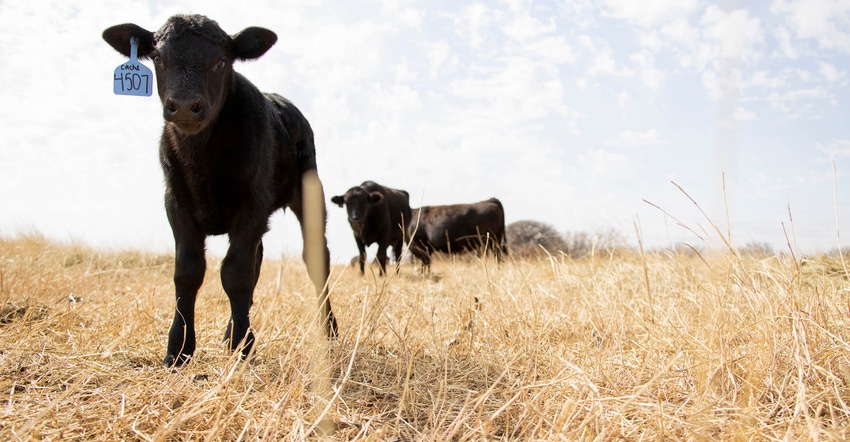Be prepared for calf colostrum needs following wildfire
Ongoing research supports early colostrum feeding is best if delivered by four hours of age.
March 13, 2024

One of the impacts of the recent wildfire in Texas and western Oklahoma is the reality that some surviving heavily pregnant cows may have injuries that prevent them from feeding their calves following birth.
Rosslyn Biggs, a veterinarian and Oklahoma State University Extension beef cattle specialist, and Dana Zook, OSU Extension west district livestock specialist, advise producers facing this situation to obtain a high-quality source of colostrum to ensure calves receive an immunity boost soon after birth. Milking the cow or maintaining a supply of frozen colostrum are the best options for colostrum replacement. Commercially prepared colostrum replacers are acceptable if a cow-derived source is not available.
Colostrum replacement and colostrum supplements are the two commercially available options. They are two very different sources of colostrum that each play a different role for a new calf. When it is determined that calves have not or will not be able to obtain colostrum directly from the cow, a colostrum replacer should be used.
Colostrum replacers may be more costly than colostrum supplements, however, they may provide a more substantial boost in immunity beyond what a supplement can provide.
Delays in a calf receiving colostrum have both short- and long-term impacts on the immune system. Ideally, a calf should receive colostrum within the first two hours of life. Administering colostrum to calves without a suckle reflex using an esophageal feeder should be done with extreme caution due to the increased risk of aspiration pneumonia. Consult a veterinarian if advice or assistance is needed to use an esophageal feeder.
On average, a calf should receive 5% to 6% of its body weight within the first four to six hours of life, with a repeated feeding of the same amount four to six hours later. About 2 quarts of colostrum should be administered to an 80-pound calf. Ongoing research supports early colostrum feeding is best if delivered by four hours of age. Understanding that most births occur unattended, producers should not wait to administer colostrum if there is evidence the calf has not nursed.
Cleanliness is important when collecting and administering colostrum. Esophageal feeders and bottles can serve as sources of disease if not adequately sanitized. Questions surrounding colostrum administration and calf care should be directed to a veterinarian or Extension educator.
You May Also Like


.png?width=300&auto=webp&quality=80&disable=upscale)
